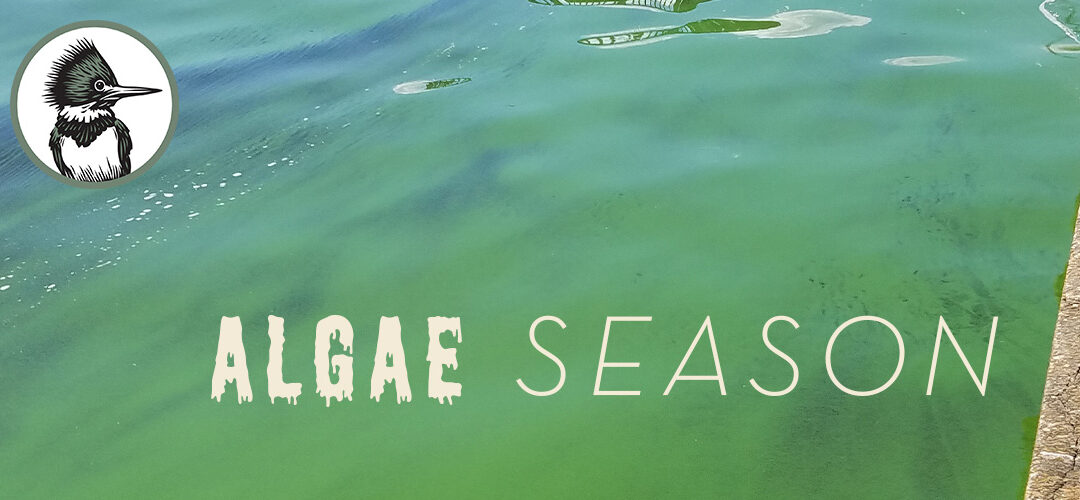Air and water temperatures are heating up, which unfortunately indicates that algae bloom season is upon us. Existing nutrient pollution, warming waters and runoff from frequent rainstorms during the summer could result in green muck coating our river and its tributaries this season. Late last year, back-to-back Hurricanes Ian and Nicole flooded the St. Johns with millions of gallons of sewage, inundating our river with more excess nutrients.
What is an Algae Bloom?
Blue-green algae, or cyanobacteria, naturally occurs in our environment. However, too much nitrogen and phosphorous can cause excessive algae growth that severely impacts the ecological balance and health of our waterways.
When you see a green, slimy coating on our river, you are likely seeing a blue-green algae bloom. There is no standard duration for a bloom and no way to determine visually whether a bloom is toxic.
What to Do if You See an Algae Bloom
- Avoid boating, swimming, or fishing in this area.
- If you or your pet come in contact with a bloom, wash off immediately and thoroughly with clean water and soap.
- Take photos of the algae you see, and note the exact location as best you can.
- Report blooms to the Florida Department of Environmental Protection at floridadep.gov/AlgalBloom or call toll free at 1-855-305-3903.
- Email report@sjrk.org with photos, time, date and location, so we can follow up with DEP and perform testing, when appropriate.
Impacts of Blue-Green Algae
Algae blooms can prevent sunlight from reaching underwater plants and SAVs, clog fish gills, and deplete oxygen from the water, harming aquatic life and potentially causing fish kills.
Humans and pets can have negative health impacts due to algae exposure. Toxins produced by some algae blooms can cause rashes, stomach cramps, nausea, diarrhea, respiratory irritation, and even harm the liver and nervous system in severe cases of high exposure. Contact a veterinarian if your pet suddenly becomes lethargic or shows signs of poisoning after an accidental encounter with blue-green algae.
What You Can Do
Create a River-Friendly Yard.
- Less is best! If you fertilize, use slow-release nitrogen without phosphorus or weed killers.
- Plant native plants.
- Create buffers with beds (native plants, organic mulch) next to water bodies, streets, driveways, and sidewalks to help prevent runoff and keep fertilizers and chemicals on your lawn.
Support policies that stop pollution at its source.
- Ban the land disposal of biosolids.
- Protect wetlands and the biofiltration they provide for our waterways.
- Improve stormwater runoff regulations.
Support Reuniting the Rivers.
- A free-flowing Ocklawaha River would reduce the need for herbicide spraying of invasive aquatic plants to prevent frequent blockages of the river and boat ramps.
- Restoring the natural flow of the Ocklawaha and over 15,000 acres of forested wetlands will greatly enhance bio-filtration and improve the ecological function of the St. Johns River Ecosystem.
- The additional freshwater provided will help offset saltwater intrusion from dredging and sea level rise that continues to move further upstream, while helping to reduce the frequency of algal blooms and improve growing conditions for submerged grasses.
